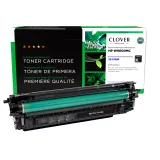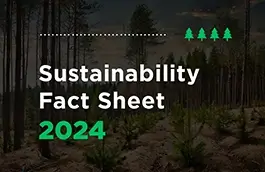
Video is an increasingly important part of social media marketing.
Anyone with a Facebook account can see it. Where you once saw text or bright images, now you see videos - from short, readymade promotional clips to fully produced commercials, interviews, tutorials, and more. In fact, Cisco predicts that by 2019, video will account for 80 percent of all Internet traffic.
As a result, marketers are more interested than ever in creating high-quality video content. But for many, this is a steep challenge. Most people believe that great video content is expensive and time-consuming to produce.
While video content certainly requires more planning than image or text content, a plethora of new tools and approaches puts professional-looking video content within reach of any brand manager - even if you don't have a Hollywood budget.
But there is no one-size-fits-all video content solution. If you want to create professional videos for social media, you need to identify your target platform, intended audience, and marketing goals.
Identify Your Preferred Social Media Channel
Creating professional videos for social media requires identifying which channel suits your brand and voicing best. Take a look at competing brands' video content and look for ways to stand out, either by outperforming them or by circumventing their audience - perhaps by using a different platform.
1. How to Create Video for Twitter
Twitter started as a text-heavy platform and remains one of the only social media channels where native text content consistently goes viral. To make great video content on Twitter, you need to capitalize on the expectations of Twitter's user base.
For one thing, you should keep it short and sweet. Twitter is not the best place for lengthy, in-depth content - that's why there's a character limit. Video content on Twitter needs to grab users' attention. To do this, you should focus on bold imagery and assertive captions that will stop people from scrolling past.
Upload videos directly to Twitter so that the content autoplays in your followers' newsfeeds, and grab their attention in the first three seconds - roughly the length of time a scrolling finger takes to move on.
2. How to Create Video for LinkedIn
Production quality is more important on LinkedIn than on other platforms. Your branded content is not competing with cat videos and someone's homemade montage of last summer's camping trip - it is competing with branded content made by other organizations, all of whom have an eye for quality.
Invest in video equipment and take time to learn how to edit. Using stock footage can help you change the pace of your video content, but be sure to maintain a focused direction when editing.
LinkedIn content should go a little bit further than general awareness - post interviews, in-depth tutorials, and other valuable content that can give your audience an insight into what separates your brand from the rest.
3. How to Create Video for Facebook
Facebook has the largest active monthly user base of any social media platform - 2 billion individual users. This makes it one of the most rewarding platforms for video content, but also one of the most crowded.
When making video content for Facebook, you need to understand how Facebook's algorithm treats video content. First of all, it rewards content that viewers watch all the way through, so focus on straight-to-the-point videos that viewers are likely to finish.
Secondly, Facebook videos must now have an "active" component. Facebook is beginning to purge itself of short, "passive" content that users watch but do not interact with. Low-impact video content designed solely to rack up views is on its way out. Think of ways to incentivize Facebook users to interact with your video content, and you will be prepared for this oncoming change.
4. How to Create Video for YouTube
YouTube is the best-known video platform and the only one in this list that is solely focused on video. Here, your content needs to be an extension of your SEO strategy, where keywords and high-value content speaks to people's needs.
With YouTube, keywords play a huge role in determining whether your videos show up in search results or not. While short-form content can produce results, long-form video content is gaining traction and will continue to grow as users begin to associate short videos with low-quality content.
Production quality is important on YouTube, but valuable insight has even higher priority. For most industries, YouTube video content is more about consideration than awareness - people tend to search for detailed reviews, product comparisons, and in-depth tutorials on YouTube more than on any other platform, so create content that speaks to these needs.
Regardless of Platform, Insightful Content is Key
Neither Twitter, LinkedIn, Facebook, nor YouTube is a new platform. They have been around for years and collected huge amounts of video content in the meantime. This makes it overwhelmingly likely that content designed for your audience already exists.
Earning the rewards of social media marketing in this environment means focusing on high-impact, insightful content for every single video you create. Social media users will respond to insightful content that helps them learn new skills and make important decisions - whereas short-form fast-food content will increasingly take a backseat.













Comments